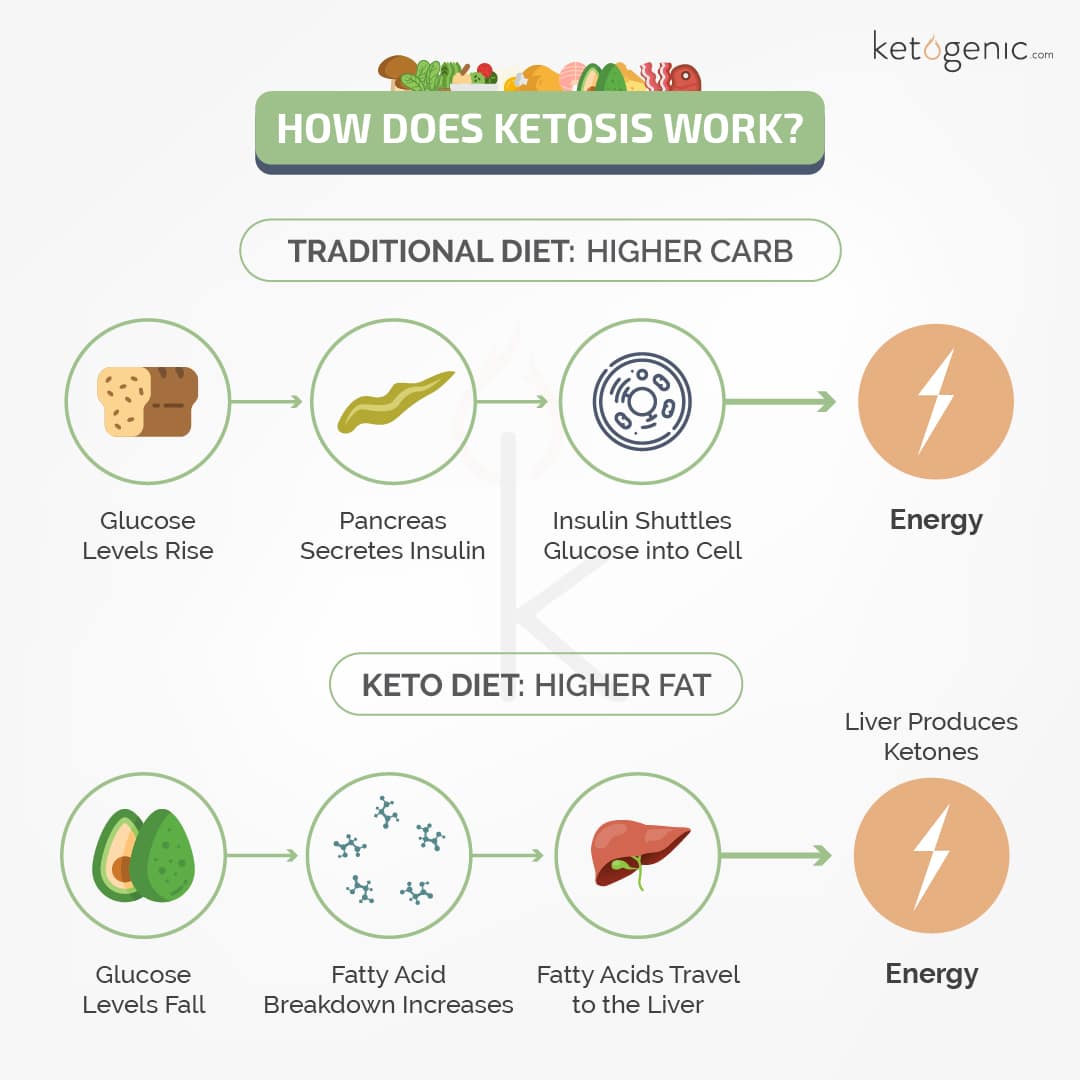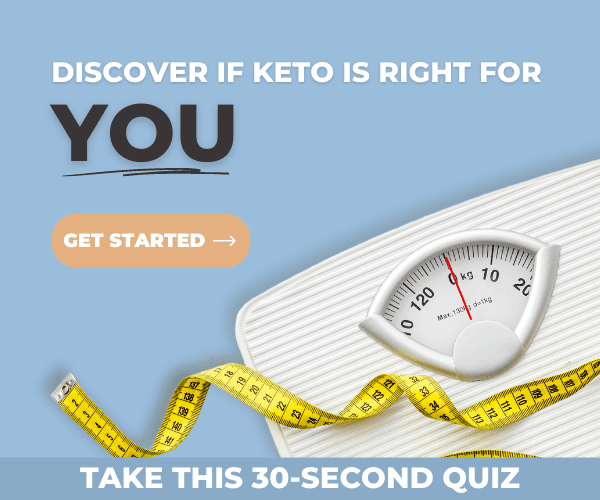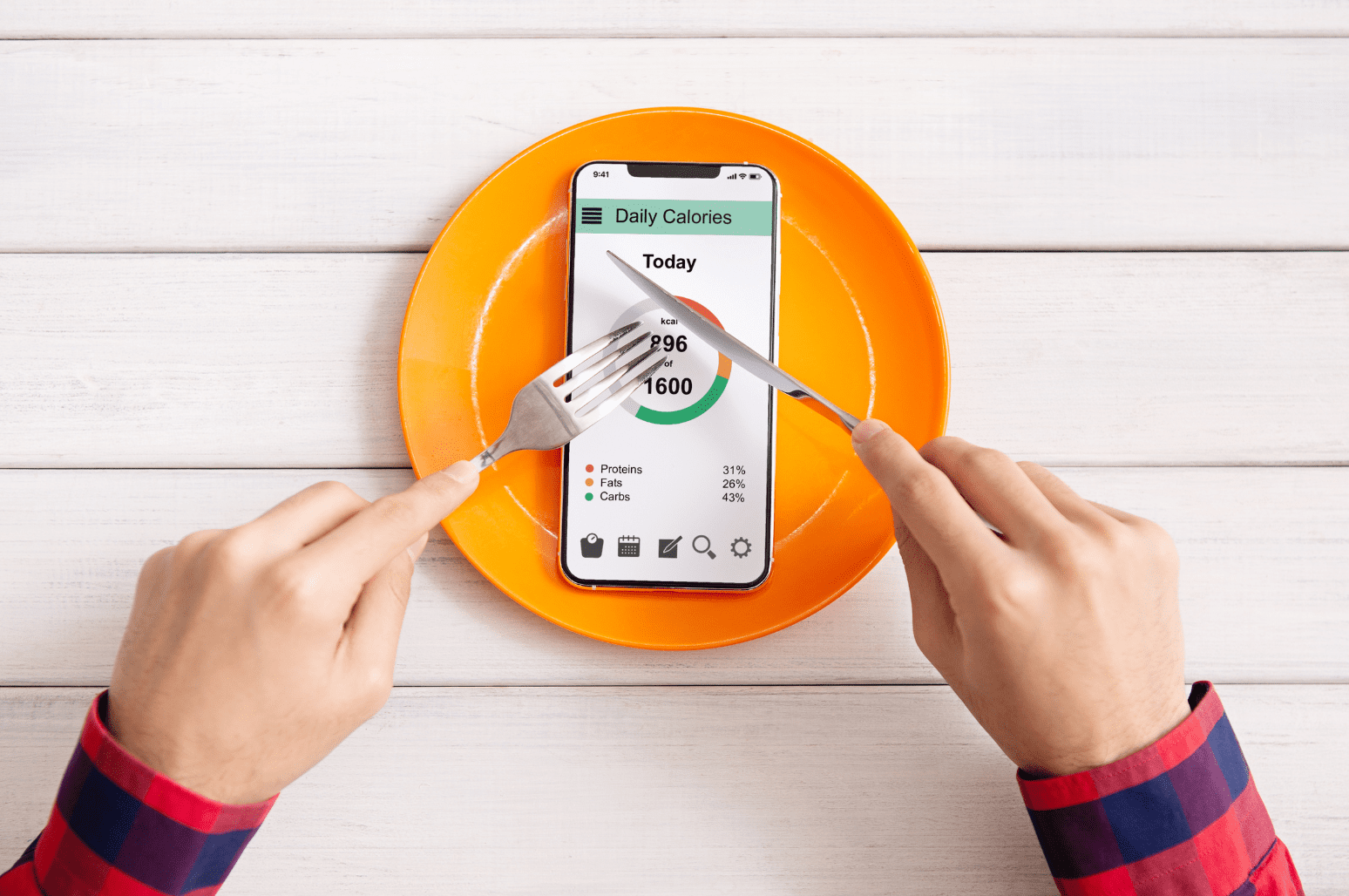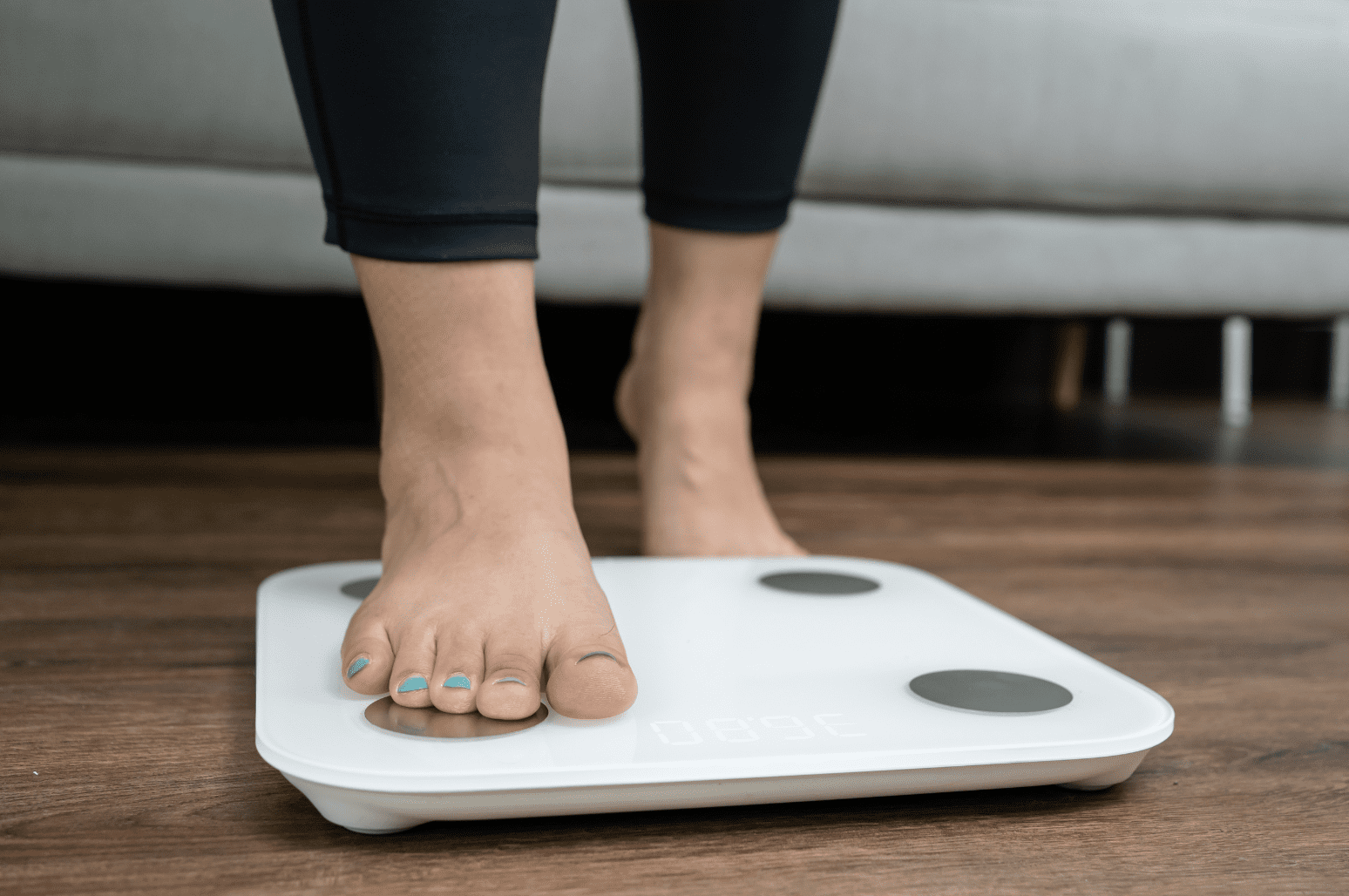
Starting the ketogenic diet, you know that the main goal is to enter and maintain a state of ketosis. After you cut your carbs down, your body should start to shift from burning glucose to burning ketones for fuel. One of the most common questions about this process is “How do you know if you’re in ketosis“?
The answer is actually quite simple and there are different ways to tell! Let’s go over what you can do to know if you’re in ketosis or not!
What is Ketosis?
Ketosis occurs as a consequence of reducing carbohydrate intake. On a SAD (standard American diet), carbohydrates are the primary macronutrient consumed. These carbs are broken down into glucose, which is used as fuel for the cells in the body. When you reduce the number of carbs you consume and glucose is no longer readily available to use as a fuel source, the body looks for an alternative.
Ketones are produced by the liver by breaking down fatty acids. These ketones supply the body with energy. This process is known as ketogenesis.
The main goal of the ketogenic diet is to put your body into a state of ketosis.

What Are the Side Effects of Ketosis?
Being in a metabolic state of ketosis can have both positive and negative effects. Because ketones provide more energy than glucose, ketones are a superior fuel source for the brain. Common effects include improved mental clarity, focus, cognitive functioning, energy levels, sleep, mood, and overall sense of wellbeing.
On the opposite spectrum, some individuals experience the keto flu when starting the ketogenic diet. The keto flu causes flu-like symptoms including headaches, fatigue, nausea, and muscle cramps. These symptoms are caused by dehydration and can be combated by supplement (or consuming) plenty of electrolytes and drinking plenty of water.
How Do You Know If You're In Ketosis?
There are a few key ways to tell if you are in ketosis or not. The simplest way to tell if you are in ketosis is to test your ketone levels. This is a clear indicator of whether or not you are in ketosis. Ketone levels can be measured through blood, urine, or breath.
However, not everyone has access to testing materials or has an aversion to needles. If this is the case, most people can tell if they are in ketosis based on how they feel. Some indicators that you are in ketosis include:
- Reduced bloating
- Improved mental clarity & focus
- Weight loss
- Increased energy levels
How Do You Test To See If You're In Ketosis?
There are three ketones produced by the body when in a metabolic state of ketosis: BHB (beta-hydroxybutyrate), acetoacetate, and acetone.
Blood ketone tests detect the presence of BHB. Urine ketone strips test for acetoacetate. Breath ketone tests detect acetone levels. Research shows that blood ketone testing is the most accurate and reliable form of ketone testing. [1] [2] [3]

A reading of 0.5mmol or higher is a clear indicator that your body is in a state of ketosis. Since the body becomes more efficient at utilizing ketones over time, you may notice that your baseline ketone levels decrease. Because of this, some experts consider a reading of 0.3 mmol or higher to be in a state of ketosis.
In general, a blood ketone level of 0.5mmol or higher is considered to be the optimal ketone level for ketosis.
Here is a simple guide to testing your ketone levels. For a more detailed explanation, please see our articles available here:

How Do You Know If You're In Ketosis?
Do you test your blood ketone levels or can you tell by the way you feel? Comment below and share your experiences with the community!
References
Byrne, H. A., Tieszen, K. L., Hollis, S., Dornan, T. L., & New, J. P. (2000). Evaluation of an electrochemical sensor for measuring blood ketones. Diabetes Care, 23(4), 500-503.
Musa-Veloso, K., Likhodii, S.S., Cunnane, S.C. (2002). Breath acetone is a reliable indicator of ketosis in adults consuming ketogenic meals. The American Journal of Clinical Nutrition, 76(1), 65-70.
Likhodii, S. S., Musa, K., & Cunnane, S. C. (2002). Breath acetone as a measure of systemic ketosis assessed in a rat model of the ketogenic diet. Clinical chemistry, 48(1), 115-120.









